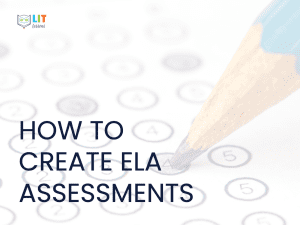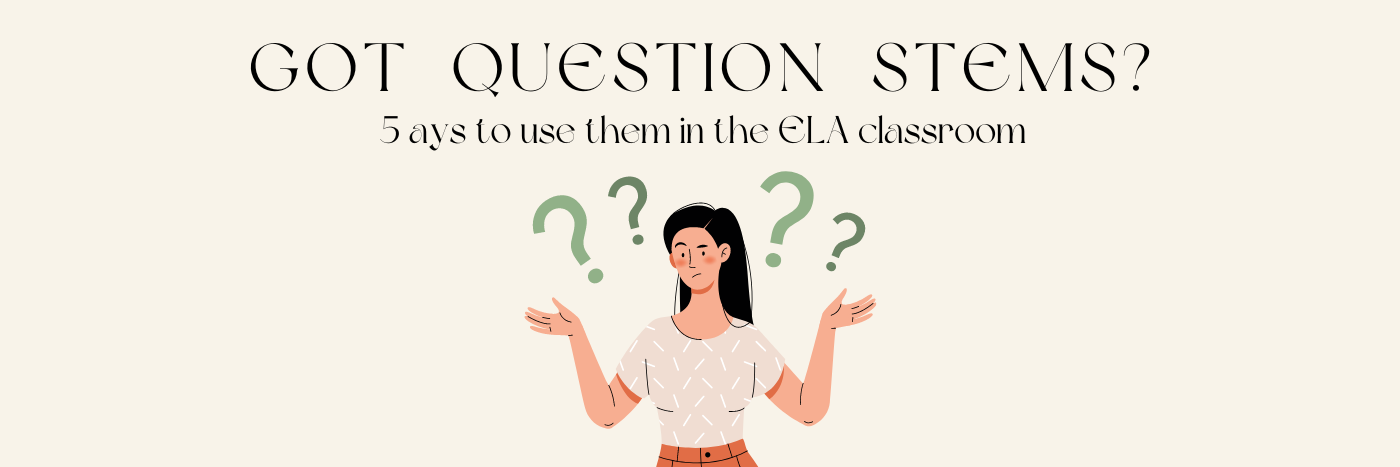
5 Steps to Create ELA Assessments for Literature
Summative assessment creation is an integral part of curriculum development, backwards planning, and measuring student learning. Crafting effective tests is a helpful feedback tool for your instructional practice and will help you become a better instructional leader in the classroom. If you want to start making your own summative assessments, follow these 5 steps to help design, create, and administer useful and informative literature tests in the middle grades ELA classroom.
Interested in a professional development workshop on how to create ELA Assessments? Click on the image below to check out an incredible course to grow your teaching practice!
1 | Set a Purpose for the Assessment
The first step in creating a summative assessment tool is to set a purpose for the test and select the anchor text for the exam. Decide whether you want to assess comprehension skills, analysis skills, or a blend of both. Then, choose an anchor text for your assessment.
2 | Plan Backwards
The next step is to engage in backwards planning, or sometimes referred to as backwards design. When you backwards plan, you determine the goals you want your students to achieve, create the summative assessment that allows students to demonstrate their mastery, and then craft your lessons to help guide students to achieving those goals. Determine the literary skills or standards you plan to assess and teach throughout a unit of study and list them. These skills or standards become the basis for the test questions.
3 | Determine Test Structure
The structure of your assessment greatly affects student outcomes. Your goal is to create a test that assesses the skills you identified in Step 2 without bias or constraints that influence students’ success. Consider segmenting your test into 3-4 sections, including a matching section, multiple-choice section, and short answer response section. The length of each section will depend on the time you are able to dedicate to administering the exam.
4 | Craft Rigorous Questions
After you outline the structure of your test, craft rigorous questions that align to the skills and standards you aim to teach. Start with the short answer response questions. Be sure to avoid giving away answers to other questions, especially when creating multiple-choice options.
5 | Analyze the Data & Determine Next Steps
After you administer the test to students, track their success on each question. Since questions align to a skill or standard, students’ performance will help highlight which standards need to be retaught and which instructional strategies were effective in the classroom.
When it comes to assessment creation, it is often easier said than done. The process can be daunting, but LIT Lessons is here to help! If you are looking for a comprehensive professional development workshop that takes you deeper than these 5 steps, provides assessment resources, and more, enroll in the COURSE NAME to cultivate and grow your assessment-creation skills.
More Blog Posts
It’s time for the annual LIT Lessons Novel Study Giveaway! Year-over-year students grow and change, and those changes are often most pronounced when a new school year begins. It’s a fresh start and a restart. The message of Restart by Gordon Korman captures the spirit of new beginnings, evolving identity, and the universal experience of growing older.
Many ELA question stem resources provide vague sentence starters or surface level prompts to encourage students to engage with a text. Oftentimes, these resources lack true depth and rigor, which means students are not being adequately challenged to critically think about a text.
Middle grades historical fiction novels have come a long way from the books available ‘decades’ ago. In fact, this growing genre is now bursting with fantastic, inspiring, and insightful novels. It comes as no surprise that these books are finding their way into middle school ELA curricula…






